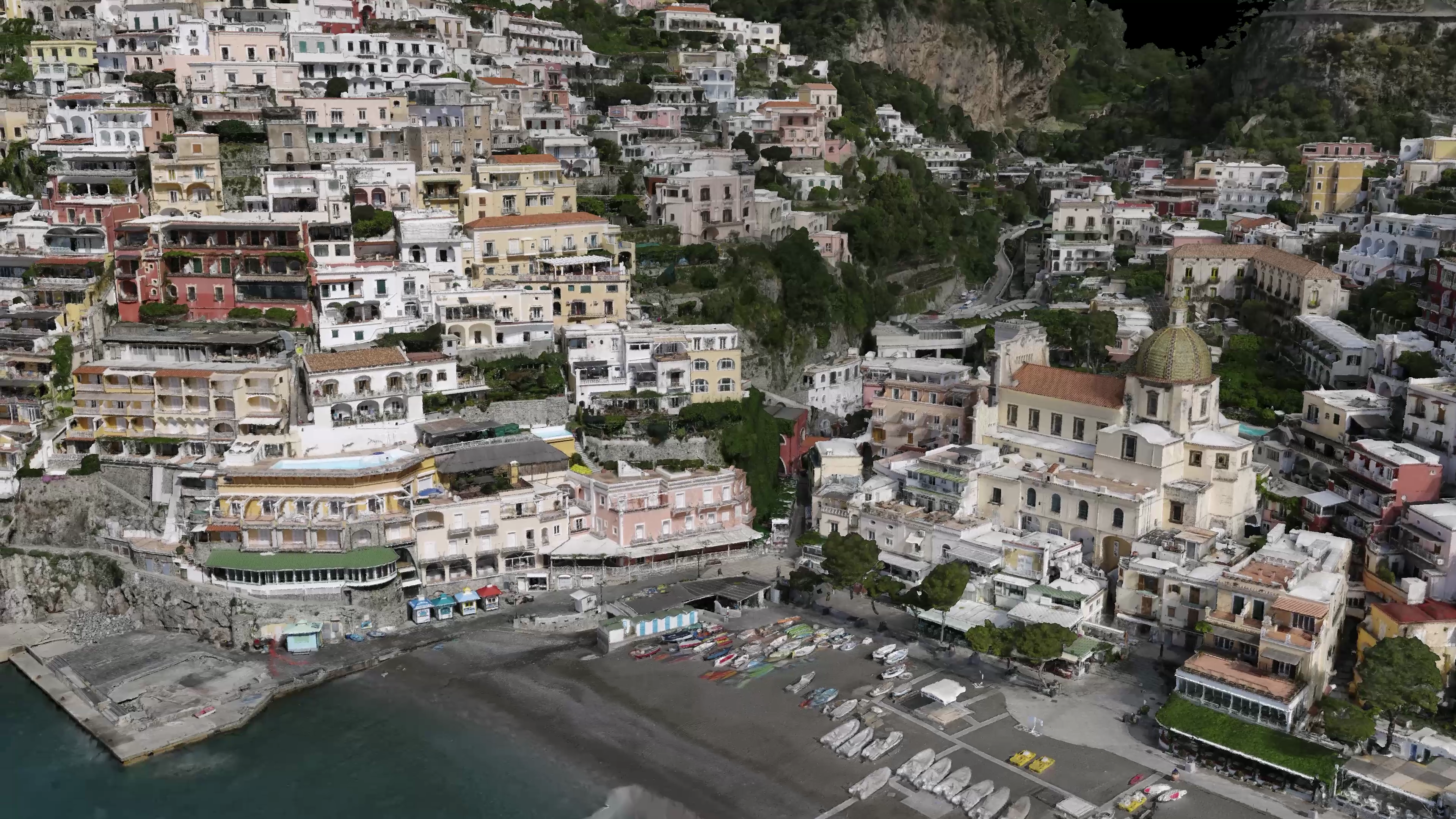

By Jim Magill
The Italian town of Positano, which hugs the cliffs along Italy’s scenic Amalfi Coast, is a delight for tourists and fashion lovers, and a nightmare for mapmakers.
The city’s topography, with streets that wind along the hills and canyons that run right up the shore of the sea, presents an impossible challenge for mapmakers using traditional methods. That’s why French drone company Parrot chose Positano as the perfect place to test out the mapping capabilities of its ANAFI AI software.
The French drone company recently teamed with Logiroad, a French software company with expertise in creating digital twins of cities, to create a 3D model of the picturesque but hard-to-map city.
“We’ve been working on the ANAFI AI project for literally years. We asked ourselves: what would be the craziest thing that we could try to map with a drone?” Olivier Revon, Parrot product leader and photogrammetry expert, said in an interview.
Erwan Renaudin, director of mobile mapping and drone solutions for Logiroad, said that when he heard about the project to create a 3D model of Positano he thought it would be a tremendous technological challenge. “With traditional surveying and mobile mapping techniques, it would have been impossible to do the cartography,” he said.
In fact, the “impossible” mission to capture the photogrammetric images used to build the digital twin of Positano was completed in three days. Using the Parrot ANAFI Ai software, the team gathered 4,800 photos at 48 MP resolution. That translated to about 75 GB of data, enough to create the huge 3D model consisting of 800 million triangles.
“With traditional meters we wouldn’t have been able to fulfill that project to the end, because you would have needed to go to down every street, every corner, to make the surveys and scan the data,” Renaudin said.

Likewise, he said it wouldn’t have been possible to conduct an aerial survey over Positano with an airplane using traditional photogrammetric meters, which lack the resolution capability of the Parrot sensors. Those sensors can achieve a ground-sample distance measurement of 2 centimeters over 100 acres. “So, the UAV was a perfect solution, especially with this one and the extreme capability of its sensor,” Renaudin said.
Using Parrot’s ANAFI AI and FreeFlight software, the team to was able to set up the intricate flight patterns and to capture images of every street and building in city.
“What’s beautiful with Anafi AI is you no longer have to go outside of the application to set up your flight mission. You can do everything in one app,” Revon said. “You just have to select what you need, a simple or double grid, or even a circular mission and you just click the start button and the drone just takes off.”
The wealth of high-quality visual data collected by the Parrot drone systems created a new set of challenges for the team, in assembling the data into a 3D model. A digital point cloud representing the city contained about 1 billion points. Because the volume of data was so dense, Logiroad has to switch from one suite of software, designed to assemble the photo images, to another, which was more precise.
“We were going through the problem you have in movies. How do you to edit that, how do you show the model after processing it?” Renaudin said. “We had to switch our techniques of mapping to what they’re using in the gaming industry. It was very interesting, even if we had more gray hair than before.”
Despite European aviation regulations that required that a pilot must monitor the drone flights over the town at all times, the flights themselves were mostly autonomous, Revon said. About 90% of the flight operation was made with the FreeFlight software, with the pilots on hand to simply start the mission, ensure that the flight was proceeding properly, ending the mission and downloading the data, Revon said.
Although the Positano project did not require flying beyond visual line of sight, Revon said drones equipped with the ANAFI AI system also are capable of completing mapping projects that require BVLOS flights over long distances.
In test flights over open country in Iceland, a Parrot drone completed 32 kilometers of BVLOS flight between two points. Designed primarily for large-scale mapping, the software can allow the operator of the mission to be sited miles away from the drone’s flight path.
“Imagine the someone is pushing a button in the US and the drone will fly in the UK,” he said. “Given the fact that Anafi AI has a 4G connection, this that is something it’s capable of doing.”
Miriam McNabb is the Editor-in-Chief of DRONELIFE and CEO of JobForDrones, a professional drone services marketplace, and a fascinated observer of the emerging drone industry and the regulatory environment for drones. Miriam has penned over 3,000 articles focused on the commercial drone space and is an international speaker and recognized figure in the industry. Miriam has a degree from the University of Chicago and over 20 years of experience in high tech sales and marketing for new technologies.
For drone industry consulting or writing, Email Miriam.
TWITTER:@spaldingbarker
Subscribe to DroneLife here.